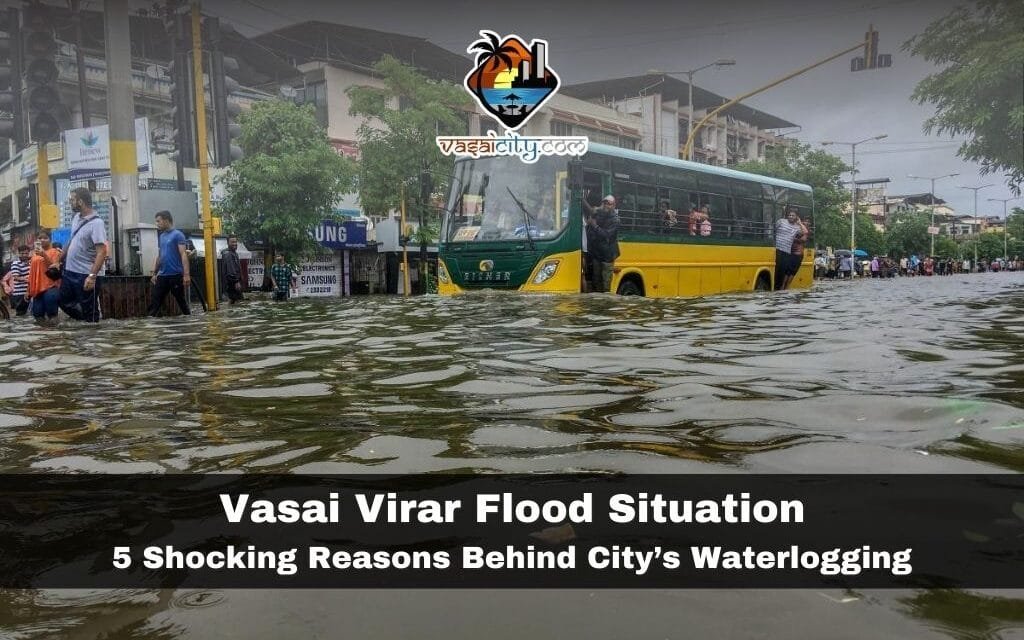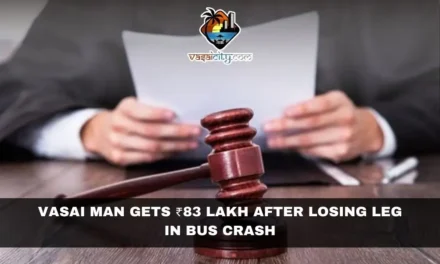The Vasai Virar Flood Situation has once again raised concerns among citizens after just two days of heavy rainfall measuring nearly 400 mm brought several areas to a standstill. Unplanned development, encroachments, and ineffective drainage systems have left residents questioning the city’s preparedness for monsoon emergencies.
Uncontrolled Development Without Drainage Planning
Over the past few years, Vasai Virar has witnessed rapid development in the form of new housing projects, infrastructure work, and road expansions. However, experts point out that drainage planning has not kept pace with this growth. Without a proper system to channel rainwater, several neighborhoods are experiencing severe waterlogging during even moderate rainfall.
Natural Drainage Blocked by Encroachments
Traditionally, rainwater in the city drained through natural streams, creeks, and canals leading to the sea. But citizens argue that encroachments, illegal landfills, and construction along creekside areas have choked these natural waterways. During high tide, the situation worsens as water fails to recede, creating a near flood-like scenario.
Environmentalists warn that unless natural water channels and mangroves are protected, Vasai Virar will continue to face severe flooding every monsoon season.
Municipal Disaster Management in Action
Despite the challenges, the Vasai Virar City Municipal Corporation (VVCMC) and the National Disaster Response Force (NDRF) carried out extensive rescue operations.
In just 48 hours, over 823 residents were rescued from areas including Bhoi Dapada, Kaman, Umarale, Sarjamori, Bhendipada, and Rajawali. Rescue teams had to wade through waist-deep water, sometimes unable to move fire brigade vehicles due to high water levels.
The civic body also set up pumping stations, food distribution centers, and temporary shelters for affected families. Fallen trees were cleared, and emergency relief was provided across several low-lying zones.
Drain Cleaning Claims Fall Flat
Every year before monsoon, the VVCMC allocates crores of rupees for drain cleaning (nala safai) across the city. This year too, officials claimed that 95% of the work was completed. However, ground reports show otherwise.
Many drains remained clogged, and in some areas, mangroves inside drainage channels obstructed cleaning. Citizens allege that this inefficiency directly contributed to water entering homes and shops, making the municipal claims appear hollow.
Mega Projects Blamed for Flooding
Adding to residents’ woes, ongoing mega infrastructure projects like the Mumbai-Ahmedabad Bullet Train and Virar-Alibaug Corridor have also been accused of worsening the flood situation. Locals say the unplanned execution of these projects has blocked natural drainage paths, forcing rainwater into residential areas.
The Way Forward
The Vasai Virar flood situation highlights the urgent need for sustainable urban planning. Protecting natural waterways, executing genuine drain-cleaning drives, and ensuring environmental safeguards are crucial if the city wants to avoid similar crises in the future.
Meanwhile, citizens await stronger accountability and effective solutions from the authorities to ensure their homes don’t turn into flood zones every monsoon.








